-
 Bitcoin
Bitcoin $83,153.2876
4.27% -
 Ethereum
Ethereum $1,558.9343
1.32% -
 Tether USDt
Tether USDt $0.9994
0.03% -
 XRP
XRP $2.0154
1.52% -
 BNB
BNB $585.8350
1.26% -
 Solana
Solana $121.2068
6.71% -
 USDC
USDC $0.9999
0.04% -
 Dogecoin
Dogecoin $0.1587
2.11% -
 TRON
TRON $0.2411
2.24% -
 Cardano
Cardano $0.6206
0.51% -
 UNUS SED LEO
UNUS SED LEO $9.2968
-1.22% -
 Chainlink
Chainlink $12.5633
2.42% -
 Avalanche
Avalanche $18.9696
2.53% -
 Stellar
Stellar $0.2336
0.53% -
 Shiba Inu
Shiba Inu $0.0...01211
2.85% -
 Sui
Sui $2.1766
2.58% -
 Hedera
Hedera $0.1668
-1.41% -
 Toncoin
Toncoin $2.8157
-4.28% -
 Bitcoin Cash
Bitcoin Cash $312.3950
6.18% -
 MANTRA
MANTRA $6.4538
0.04% -
 Litecoin
Litecoin $75.7452
1.24% -
 Polkadot
Polkadot $3.5555
1.55% -
 Dai
Dai $0.9999
0.02% -
 Bitget Token
Bitget Token $4.3138
2.81% -
 Hyperliquid
Hyperliquid $15.1799
7.11% -
 Ethena USDe
Ethena USDe $0.9987
0.02% -
 Pi
Pi $0.6276
5.27% -
 Monero
Monero $209.2344
4.30% -
 Uniswap
Uniswap $5.1938
2.36% -
 OKB
OKB $53.0406
-1.89%
Coinbase leverage tutorial
Understanding the complexities of leverage trading on Coinbase empowers experienced traders to capitalize on enhanced profit potential while managing substantial risks.
Nov 09, 2024 at 11:32 am
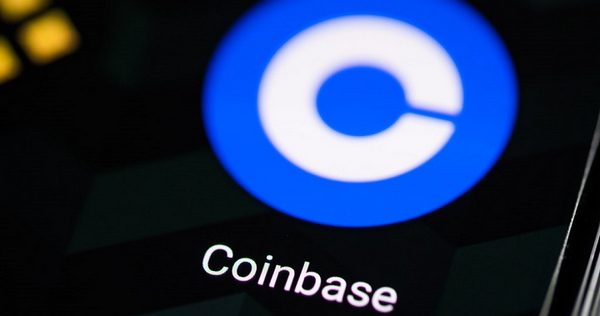
Coinbase Leverage Tutorial: A Comprehensive Guide to Trading with Leverage on Coinbase
Coinbase, one of the most reputable cryptocurrency exchanges globally, provides a powerful feature for experienced traders: leverage trading. Understanding how to leverage trade can significantly enhance your profit potential but also carry substantial risks. This comprehensive tutorial will delve into the intricacies of leverage trading on Coinbase, empowering you to make informed decisions and maximize your trading outcomes.
What is Leverage Trading?
Leverage trading involves borrowing funds from an exchange to amplify your trading position. This allows you to trade with a larger amount of funds than you currently possess. For instance, if you have $1,000 in your Coinbase account and utilize 10x leverage, you could trade with $10,000.
Why Use Leverage on Coinbase?
Leverage trading offers several advantages, including:
- Increased profit potential: Amplifying your trading position can lead to substantial profits if the market moves in your favor.
- Enhanced diversification: With leverage, you can allocate a smaller amount of capital to various trades, diversifying your portfolio and reducing your risk.
- Hedging: Leverage can be used to hedge your existing positions, reducing your exposure to potential losses.
Risks of Leverage Trading
While leverage can enhance your profits, it also carries significant risks:
- Amplified losses: If the market moves against you, your losses will be amplified in proportion to the leverage used.
- Margin call: If your losses exceed your account equity, Coinbase may issue a margin call, forcing you to deposit additional funds or liquidate your position.
- Liquidation: If you fail to meet a margin call, Coinbase may liquidate your position, potentially resulting in substantial losses.
How to Use Leverage on Coinbase
To activate leverage trading on Coinbase, follow these steps:
- Enable Leverage Trading: Access your Coinbase account and navigate to the settings. Locate the "Leverage Trading" option and click "Enable."
- Verify Your Account: Coinbase requires identity verification to enable leverage trading. Complete the necessary steps to verify your identity.
- Understand the Risk: Before using leverage, it's crucial to thoroughly understand the risks involved. Coinbase provides educational resources and a risk disclosure agreement. Take the time to review these materials.
- Choose a Leverage Level: Determine the appropriate leverage level for your trading strategy and risk tolerance. Coinbase offers leverage options ranging from 2x to 10x.
- Open a Margin Trading Account: Create a separate margin trading account to isolate your leverage trades from your regular trading operations.
- Trade with Leverage: Once your margin trading account is funded, you can execute trades with leverage. Pay close attention to your position size and risk management strategies.
Step-by-Step Example:
- Suppose you have $1,000 in your Coinbase account and want to trade ETH with 5x leverage.
- Activate leverage trading and create a margin trading account.
- You now have access to $5,000 in your margin trading account ($1,000 x 5x leverage).
- You decide to buy $5,000 worth of ETH, effectively using $1,000 of your own funds and borrowing $4,000 from Coinbase.
- If ETH rises by 10%, your profit would be amplified by 5x, resulting in a $500 profit ($5,000 x 0.1 x 5).
- However, if ETH drops by 10%, your loss would also be amplified by 5x, resulting in a $500 loss ($5,000 x 0.1 x 5).
Risk Management Tips:
- Use stop-loss orders: Automatically close your position if the price moves against you to a predetermined level, limiting your losses.
- Monitor your margin: Keep a close eye on your account equity and the margin requirement for your open positions. If your margin drops below a certain level, you may receive a margin call.
- Avoid trading with excessive leverage: Using excessive leverage can significantly increase your risk of liquidation. Choose a leverage level that aligns with your trading experience and risk tolerance.
- Understand the potential impact of fees: Coinbase charges interest on borrowed funds, which can impact your profitability.
Disclaimer:info@kdj.com
The information provided is not trading advice. kdj.com does not assume any responsibility for any investments made based on the information provided in this article. Cryptocurrencies are highly volatile and it is highly recommended that you invest with caution after thorough research!
If you believe that the content used on this website infringes your copyright, please contact us immediately (info@kdj.com) and we will delete it promptly.
- US SEC May Be Open to a Flexible Exemptive Approach to Crypto Regulation
- 2025-04-12 10:00:13
- Chainlink (LINK) Price Is Revisiting a Critical Level After a Sharp 15.9% Weekly Correction.
- 2025-04-12 10:00:13
- Why MAGACOIN FINANCE Is Becoming a Standout in a Slow Market
- 2025-04-12 09:55:14
- Popcat (POPT), a meme coin built on the Solana blockchain and inspired by the viral meme, has surged 33% over the past 24 hours
- 2025-04-12 09:55:14
- Fed Stands Ready as Leverage Unwinds and Trump Temporarily Stills the Storm
- 2025-04-12 09:50:13
- From April 7 to 11, the virtual asset market experienced extreme volatility
- 2025-04-12 09:50:13
Related knowledge
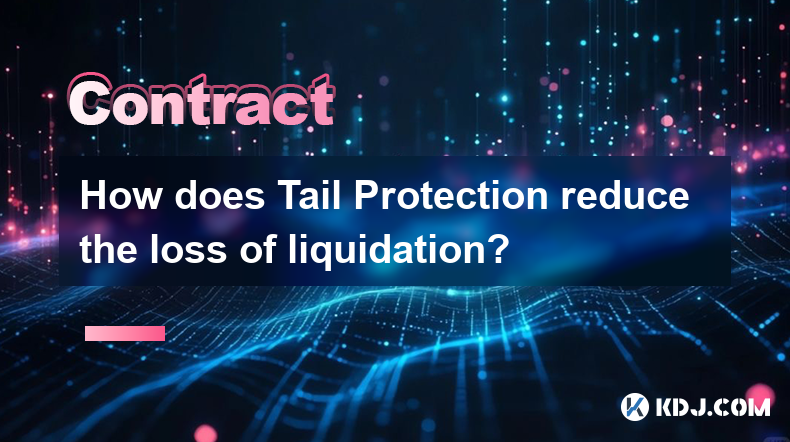
How does Tail Protection reduce the loss of liquidation?
Apr 11,2025 at 01:50am
Introduction to Tail Protection in CryptocurrencyTail Protection is a mechanism designed to mitigate the risks associated with liquidation in cryptocurrency trading. Liquidation occurs when a trader's position is forcibly closed by the exchange due to insufficient margin to cover potential losses. This often happens in leveraged trading, where traders b...

How to judge the market trend by the position volume?
Apr 11,2025 at 02:29pm
Understanding how to judge the market trend by position volume is crucial for any cryptocurrency trader. Position volume, which refers to the total number of open positions in a particular cryptocurrency, can provide valuable insights into market sentiment and potential price movements. By analyzing this data, traders can make more informed decisions ab...

Why does a perpetual contract have no expiration date?
Apr 09,2025 at 08:43pm
Perpetual contracts, also known as perpetual futures or perpetual swaps, are a type of derivative product that has gained significant popularity in the cryptocurrency market. Unlike traditional futures contracts, which have a fixed expiration date, perpetual contracts do not expire. This unique feature raises the question: why does a perpetual contract ...
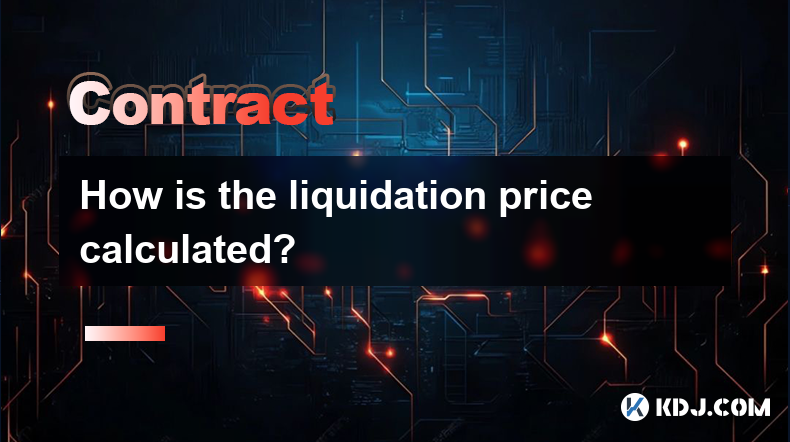
How is the liquidation price calculated?
Apr 12,2025 at 01:35am
Introduction to Liquidation PriceLiquidation price is a critical concept in the world of cryptocurrency trading, particularly when dealing with leveraged positions. Understanding how this price is calculated is essential for traders to manage their risk effectively. The liquidation price is the point at which a trader's position is forcibly closed by th...
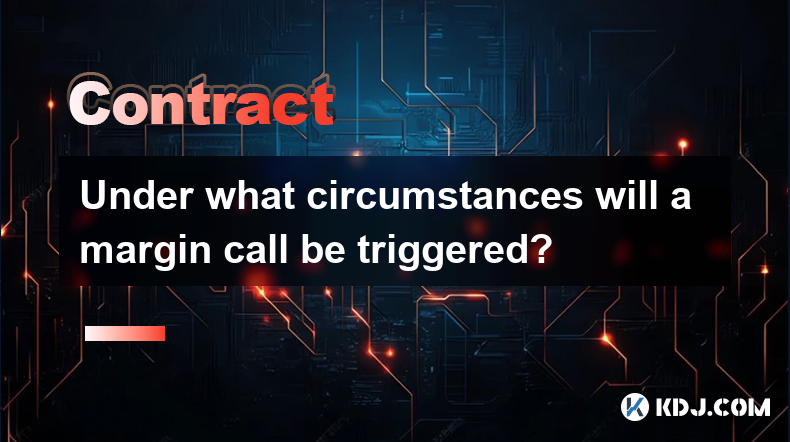
Under what circumstances will a margin call be triggered?
Apr 08,2025 at 02:43pm
Margin trading in the cryptocurrency market allows traders to borrow funds to increase their trading position, potentially amplifying both gains and losses. A critical aspect of margin trading is understanding when a margin call might be triggered, as it can significantly impact your trading strategy and financial health. In this article, we will explor...
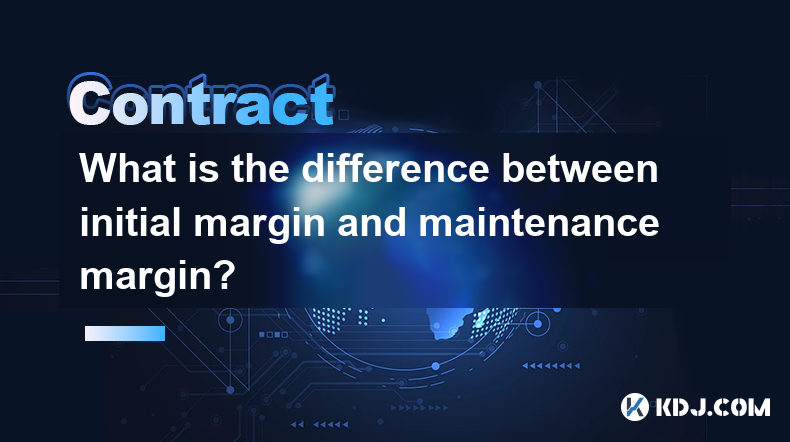
What is the difference between initial margin and maintenance margin?
Apr 11,2025 at 01:14pm
In the world of cryptocurrency trading, understanding the concepts of initial margin and maintenance margin is crucial for managing risk and maximizing potential returns. These terms are fundamental to margin trading, a practice that allows traders to borrow funds to increase their trading position. Let's delve into the differences between initial margi...

How does Tail Protection reduce the loss of liquidation?
Apr 11,2025 at 01:50am
Introduction to Tail Protection in CryptocurrencyTail Protection is a mechanism designed to mitigate the risks associated with liquidation in cryptocurrency trading. Liquidation occurs when a trader's position is forcibly closed by the exchange due to insufficient margin to cover potential losses. This often happens in leveraged trading, where traders b...

How to judge the market trend by the position volume?
Apr 11,2025 at 02:29pm
Understanding how to judge the market trend by position volume is crucial for any cryptocurrency trader. Position volume, which refers to the total number of open positions in a particular cryptocurrency, can provide valuable insights into market sentiment and potential price movements. By analyzing this data, traders can make more informed decisions ab...

Why does a perpetual contract have no expiration date?
Apr 09,2025 at 08:43pm
Perpetual contracts, also known as perpetual futures or perpetual swaps, are a type of derivative product that has gained significant popularity in the cryptocurrency market. Unlike traditional futures contracts, which have a fixed expiration date, perpetual contracts do not expire. This unique feature raises the question: why does a perpetual contract ...

How is the liquidation price calculated?
Apr 12,2025 at 01:35am
Introduction to Liquidation PriceLiquidation price is a critical concept in the world of cryptocurrency trading, particularly when dealing with leveraged positions. Understanding how this price is calculated is essential for traders to manage their risk effectively. The liquidation price is the point at which a trader's position is forcibly closed by th...

Under what circumstances will a margin call be triggered?
Apr 08,2025 at 02:43pm
Margin trading in the cryptocurrency market allows traders to borrow funds to increase their trading position, potentially amplifying both gains and losses. A critical aspect of margin trading is understanding when a margin call might be triggered, as it can significantly impact your trading strategy and financial health. In this article, we will explor...

What is the difference between initial margin and maintenance margin?
Apr 11,2025 at 01:14pm
In the world of cryptocurrency trading, understanding the concepts of initial margin and maintenance margin is crucial for managing risk and maximizing potential returns. These terms are fundamental to margin trading, a practice that allows traders to borrow funds to increase their trading position. Let's delve into the differences between initial margi...
See all articles























































































